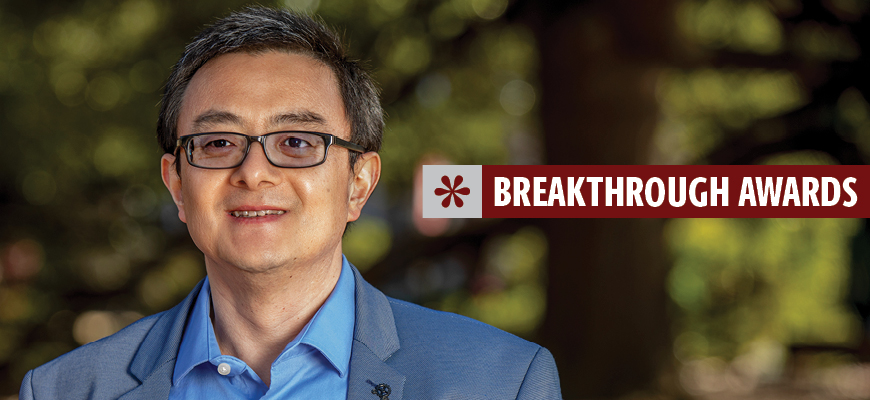
Breakthrough Star: Yi Wang
Engineering researcher looks to reduce time needed for computer modeling
Posted on: June 15, 2021; Updated on: June 15, 2021
By Chris Horn, [email protected], 803-777-3687
Simulation and computing is a mainstay in engineering design, a mathematical modeling process that allows engineers to predict the behavior of a machine or system in real-world conditions. But if the datasets are huge and complex, modeling can take days or even weeks to sort out. That’s why Yi Wang is using a method called reduced-order models to speed things up.
“I can shrink the computational time necessary from weeks or months to seconds,” says Wang, an associate professor of mechanical engineering in the College of Engineering and Computing. Reduced-order models are basically simplifications of much more complex models. Think of an mp3 music file, which is a highly compressed version of much larger and more complex musical recording. The mp3 music sounds the same, but it requires far less computing power to play.
Wang’s application of engineering mathematics has made him a research star since joining the engineering and computing faculty in 2017. In that time, he has published 17 peer-reviewed articles in internationally acclaimed journals and garnered more than $3.6 million in research funding from Department of Defense agencies, NASA and the Federal Railroad Administration, among others.
My role as the professor is to engage the students and get them excited ... When they understand what can be accomplished with engineering mathematics, they’ll be inspired to pursue it.
Yi Wang
One such project has involved computational simulation on aircraft designs, focusing on the wind-induced vibrations to the aircraft structure — a phenomenon called “flutter” that can catastrophically damage an aircraft in flight. Developing faster but accurate computer modeling for this is crucial as airplane manufacturers turn to lighter weight, more flexible materials for greater fuel efficiency.
“Dr. Wang’s pioneering technology will help us build fast models, enabling simulation at real-time speed and giving us greater applicability to control and optimization,” says Kapil Pant, Wang’s research partner at CFD Research Corporation.
Wang tries to infuse his teaching of engineering mathematics with aerospace concepts, encouraging his students to apply mathematics to solve engineering problems.
“You can use mathematics to model plant growth or determine how high a rocket can go,” he says. “My role as the professor is to engage the students and get them excited about this concept. When they understand what can be accomplished with engineering mathematics, they’ll be inspired to pursue it. My goal is for them to exceed me.”